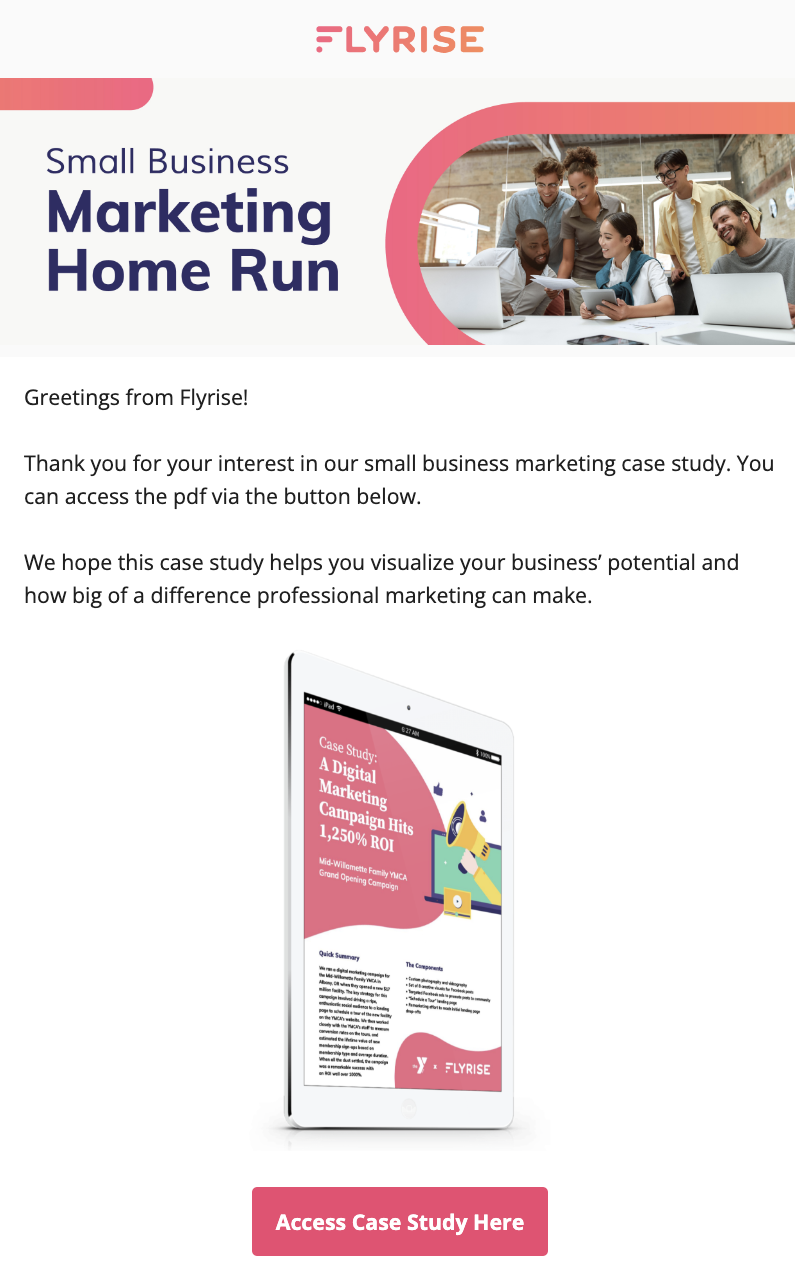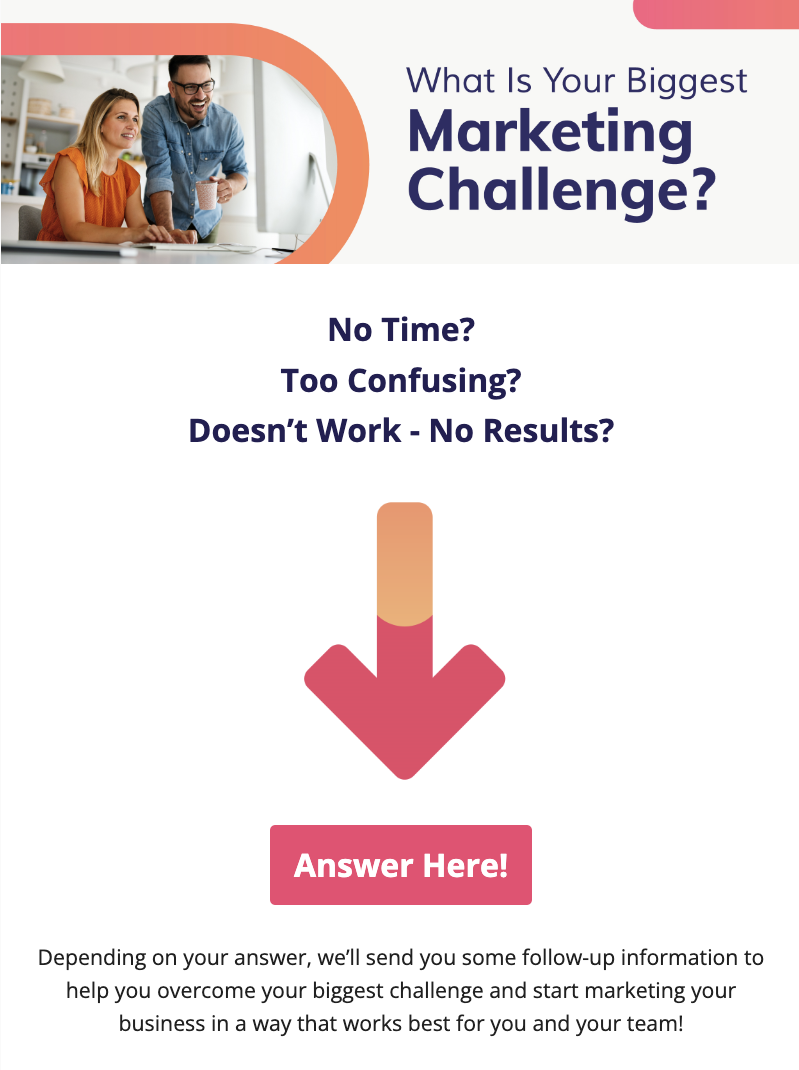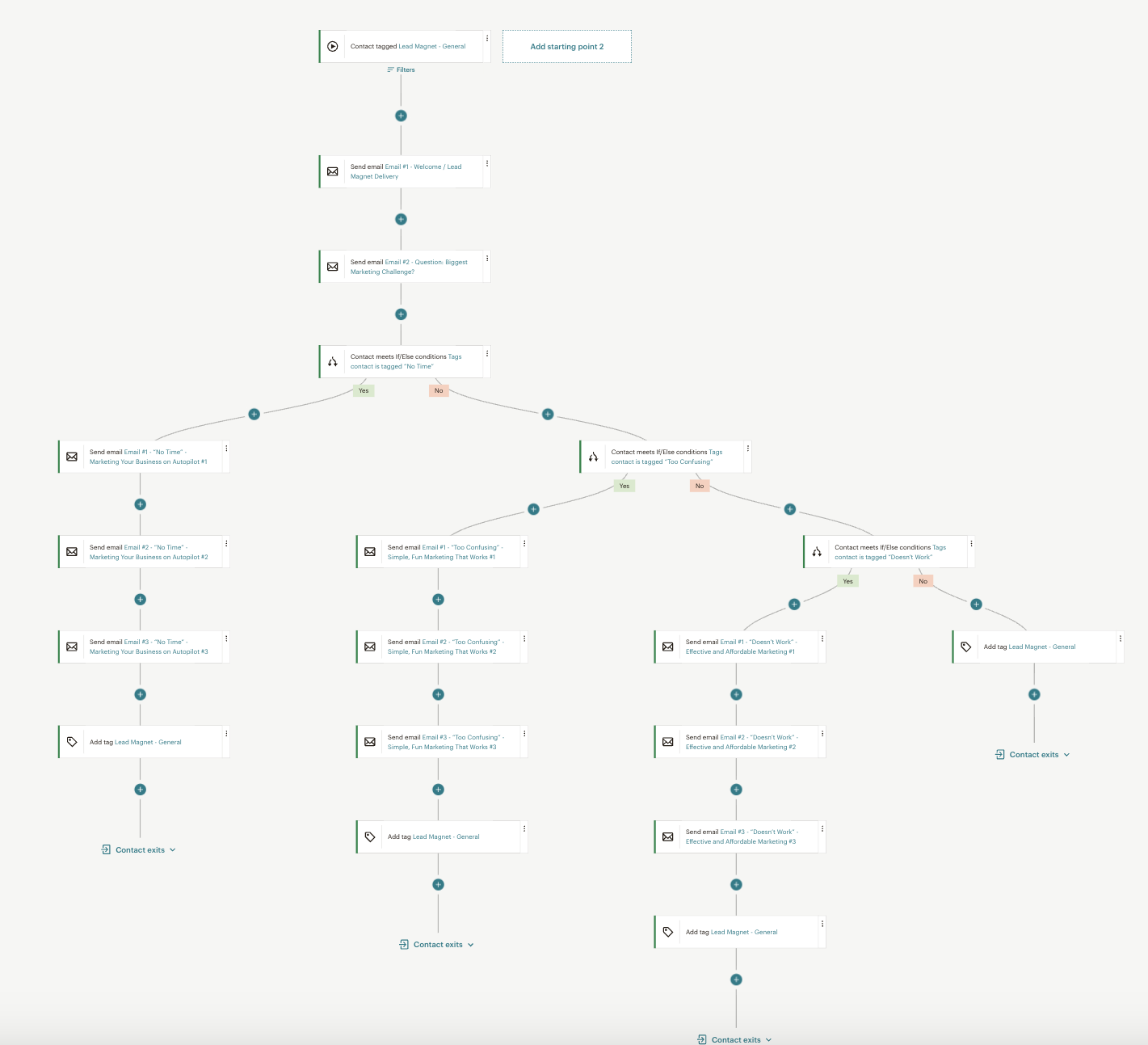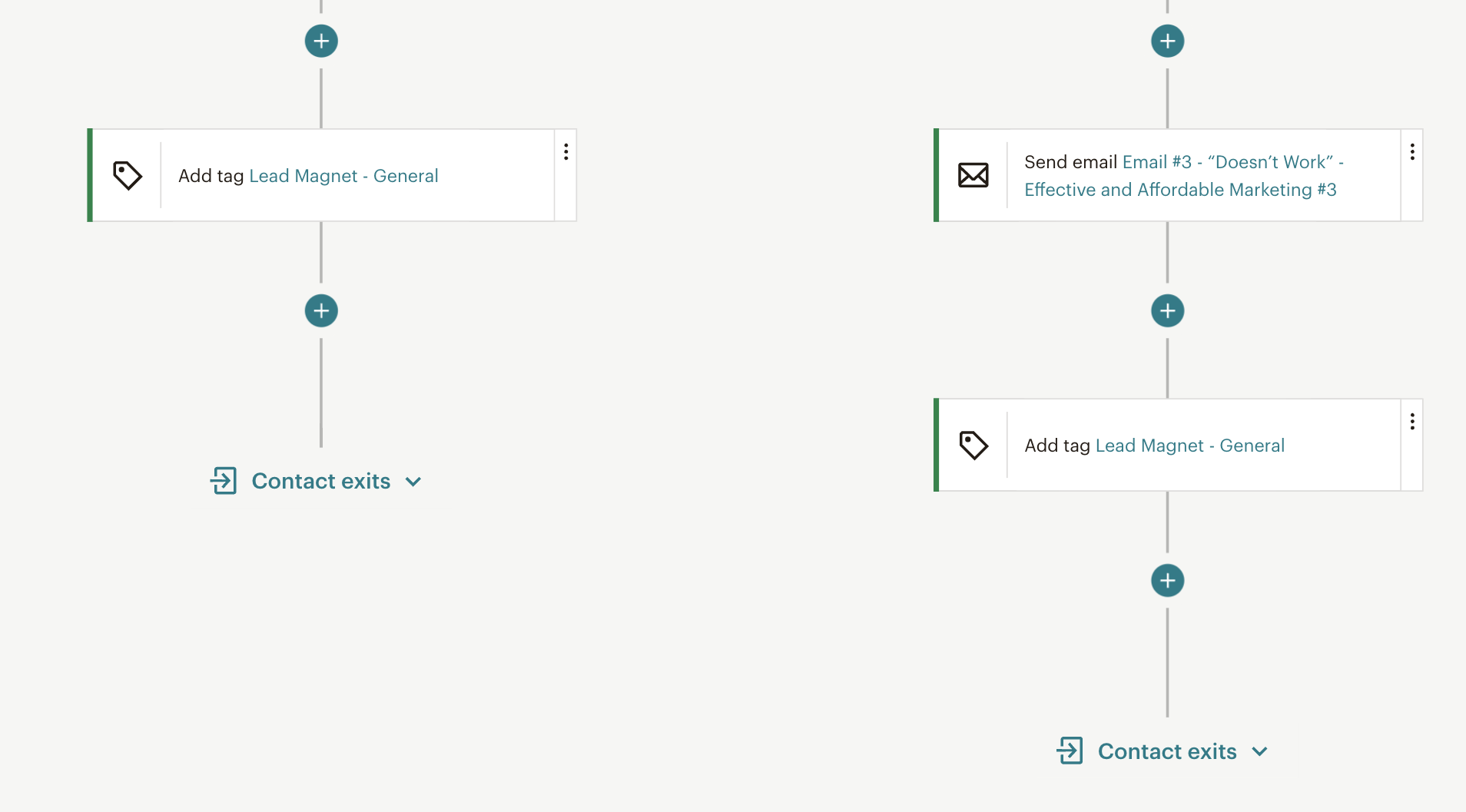Today, the vast majority of B2B businesses (87%) use email as a marketing tool.
B2B Email Marketing
There’s no denying that email is an important channel of communication for B2B businesses, but simply sending out emails for the sake of “marketing” won’t help you get the results you’re after. To stand out from your competition and actually generate revenue, you need an email marketing strategy that is informed by your B2B target audience and specifically designed to attract, nurture, and convert B2B readers.
In this blog post, we’ll highlight key differences between B2B and B2C audiences and share proven B2B strategies and tips from our experienced email marketing services team. With this knowledge under your belt, your investment in email marketing will pay off in spades!
What is B2B Email Marketing?
As you probably know, “B2B” or “Business-to-Business” is a term used to describe transactions or activities that take place between one business and another. On the other hand, the term “B2C” or “Business-to-Consumer” refers to transactions or activities between a business and an individual consumer. As an example, a small business digital marketing agency falls under the B2B umbrella because its target customer is small businesses that need marketing services. Put simply, the main difference between B2B and B2C businesses is the type of audience they are targeting.
With this distinction in mind, B2B email marketing refers to when a business uses email marketing to communicate with other businesses, rather than targeting individual consumers. B2B email marketing includes any and all marketing emails that are sent out to other businesses, such as newsletters, educational emails, promotional emails, welcome emails, confirmation emails, lead nurturing emails, seasonal campaigns, etc.
Why is it so important to distinguish between B2B and B2C email marketing? Because, as with any type of marketing, the email marketing strategies and tactics you employ should be informed by your target audience or ideal customer. And a typical B2B reader will react and respond to email communications quite differently than your typical B2C reader.
B2B vs. B2C Email Marketing Strategies
B2B businesses face many unique marketing challenges and opportunities. For one, B2B conversions and sales tend to happen more slowly compared to B2C transactions, making the typical B2C sales cycle longer and more complex. B2B transactions often involve multiple decision-makers, meaning more hoops to jump through before a conversion can take place.
B2B services also tend to cost more, so businesses typically spend more time in the consideration phase. In fact, a whopping 77% of B2B customers report that they research thoroughly before making a purchase. So, while an individual consumer may decide to buy a new dress on impulse in a matter of minutes, a business could take months or even years to decide to finally hire a business consultant.
B2B audiences also expect different email content, style, and tone compared to B2C audiences. While individual B2C consumers expect sales-focused content and promotions, blatant sales emails can turn away B2B consumers who might be looking for more informational or educational content. B2B email marketers need to focus on delivering value and demonstrating their authority and professionalism over time. This is often accomplished by sharing resources like how-to guides or industry trend reports.
These challenges make it incredibly important for B2B businesses to nurture their leads. And email marketing is one of the best ways to nurture, educate, demonstrate value, and eventually convert B2B leads that may be in that prolonged consideration phase.

How Can B2B Companies Benefit from Email Marketing?
Nearly 60% of B2B marketers agree that email is the most effective marketing channel. Perhaps that’s because email has an impressive average ROI of nearly $40 for every dollar spent. If you are strategic with your email marketing and follow B2B best practices, you can even surpass this ROI.
Not only is B2B email marketing highly cost-effective, but it can also provide you with measurable results and help you gain a better understanding of your target audience and the typical buyer’s journey. Indicators such as open rates, click-through rates, content engagement, and delivery rates can be monitored and optimized to improve your conversions. Paying close attention to these kinds of indicators can help you identify key areas for improvement in your funnel. For example, maybe your emails are achieving great open and engagement rates, but the leads fail to take action once they follow the CTA and arrive at the landing page on your website. With this information, you can focus on improving your landing page to boost your conversion rate.
All in all, when done carefully and strategically, email marketing can help your B2B business in 4 key areas:
- Generate brand awareness
- Attract and secure new leads
- Nurture leads
- Convert leads
Despite all the potential that email marketing holds, it’s important to note that certain types of B2B email marketing are more effective at generating results than others. For example, cold email blasts to non-nurtured leads tend to have a low conversion rate of only 1%, while lead nurturing email leads generate 4-10 times the response rate. This is why building out an informed B2B strategy to guide your email marketing efforts is so important.
Building a B2B Email Marketing Strategy
If you’re unorganized and inconsistent with your B2B email marketing campaigns, you’ll be leaving revenue on the table year after year. A B2B email marketing strategy is an overarching plan that will guide all of your email marketing efforts and help tie your campaigns together. It’s essentially a game plan of all the things you need to accomplish with your email marketing campaign(s).
Your B2B email marketing strategy should include the following components:
- Overview of your target audience(s)
- Clearly defined email marketing goals and objectives
- Specific KPIs (key performance indicators) or measurable metrics that correspond to each of your goals and help you track your progress
- A variety of campaigns and proven methods that are informed by your goals
- Content calendar or timeline for the year ahead highlighting key focuses, proposed topics, and priorities for each month
- Relevant processes, including planning, production, and analysis of your email marketing campaign performances
If you aren’t confident in your ability to put together a solid B2B email marketing strategy on your own with all of these components, consider hiring a specialized B2B email marketing consultant to guide you. A B2B-focused email marketing strategy is an invaluable investment that will provide valuable structure and planning to set you up for success. Once you have an email marketing strategy in place, you can begin to build out your individual B2B email campaigns.
Lead-Nurturing B2B Email Campaign: Step by Step
Despite the clear importance of nurturing leads in the B2B space, at least 68% of B2B businesses do not have a sales funnel in place. Building out a sales funnel with an automated email sequence is a proven strategy for B2B businesses to capture, nurture, and convert new leads. Below, we’ll walk you through how to build out a B2B email strategy and lead nurturing campaign that is designed to generate revenue.
1. Come up with an irresistible lead magnet. Offer something of value that will entice your ideal customer to sign up and enthusiastically offer up their email. This could be a special discount (more common for B2C businesses), a free consultation with an expert, a webinar recording, a helpful guide, or any other type of educational resource that helps them overcome a problem they may be facing. Think of this resource not only as a way to get them onto your email list but also as an opportunity to encourage a paradigm shift or overcome a common objection that may be holding them back from doing business with you.

2. Deliver the free resource via email along with a warm welcome. This first email can be short and sweet– it’s best not to try and sell anything here. Instead, focus on the value of the lead magnet you’re sharing.
3. Follow up with a series of emails that mirror your buyer’s journey and nurture your leads. Think of this phase as the getting-to-know-you dating period before deciding to make a relationship official. Because the B2B buyer’s journey tends to be longer, consider at least 3-4 nurturing emails before sending a direct sales letter. As for the content, you could solve a common problem for your potential customers, share a video testimonial or case study, overcome a common objection, answer an FAQ, or explain how your product or service differs from your competitors.

4. Send your sales letter. This is where you can finally present a clear and direct sales pitch and call to action. In this email, illustrate how your product or service will help your potential customers overcome their problems and experience a positive transformation. Explain your offer clearly and give them one obvious step to take. Make the ask early on and repeat it at least once more toward the end of the email.
5. Funnel these leads into your standard email campaigns. After a campaign like this, your leads should now be nice and warm– close to taking action if they haven’t done so already. So don’t let them go cold again! Stay top-of-mind with monthly newsletters, seasonal campaigns, special offers, etc. Continue to offer valuable information, tips, and resources to keep them subscribed and engaged.


In the MailChimp example above, once the contact has gone through the entire nurturing sequence, they are tagged “Lead Magnet – General” and will be added to the main audience for future emails.
Proven B2B Email Marketing Strategies & Tactics
Below are some additional tips and proven strategies to help you design B2B email marketing campaigns that actually generate results:
- Strategically segment your email list. List segmentation for B2B email marketing will look much different than B2C email marketing. Because B2B email audiences are groups rather than individuals, it’s a good idea to send different emails to different individuals within the same business you’re targeting. Segmenting your email list according to different roles/buyer personas will allow you to communicate in a more targeted way to multiple people within the same business. Possible buyer personas include initiators, users, buyers, deciders, gatekeepers, and influencers, just to name a few.
- Stick to one obvious CTA per email and include the CTA button multiple times, at least at the beginning and end of every email. With too many options to choose from, readers can be left with decision-making paralysis so keep it simple and straightforward!
- Don’t miss out on the opportunity for testing. You can learn a TON by continually trying new things with the creatives and copy in your email campaigns. Do some A/B testing or split testing and compare results.
- A well-designed, polished email design will help you stand out in the B2B space and demonstrate your professionalism. Ensure your email template design and branding are cohesive and consistent with your other marketing materials, website, etc.
- Personalization works well, but half-assed personalization is painfully obvious and can do more harm than good. If you’re going to try and be personal with your emails, take the time to do it right.
- Share educational blog posts in your email newsletters. If you’re already creating blog content for SEO or other marketing purposes, consider including links to your blogs in your newsletters– especially if the blog posts are helpful and interesting for your audience. This can help educate your readers while also generating more website traffic.
- Share exclusive content with your subscribers to encourage more people to signup for your newsletter. While blog posts are great to include in your newsletters, you’ll also want to add in some exclusive tips, information, opportunities, or promotions.
- Pose questions to your audience to learn more about them. For example, a marketing agency might include a question like, “What is your biggest marketing challenge?” with multiple choice buttons to choose from. After collecting this kind of info, you can send more targeted emails that help solve that specific problem.
- Mirror your buyer’s journey and sales cycle. The five major stages of the buyer’s journey are awareness, consideration, decision-making, retention, and advocacy.
- Leverage case studies and testimonials. Don’t do all the talking– pass the mic to your past and current clients from time to time! Video testimonials are especially powerful and help break up the text to make your emails more interesting and varied.
- Be sure to optimize your emails for mobile viewing and ensure they are responsive. Nowadays, the majority of email views come from mobile devices, not desktops– so don’t make mobile design and testing an afterthought!
B2B Email Marketing Services from Flyrise
While a B2C business can throw together a quick 15%-off-email blast and still get instant sales, a B2B business needs to be more thoughtful and enticing with their email communications. Perhaps that’s why so many B2B companies seek professional support in developing their email marketing strategies and campaigns.
Flyrise is a professional yet affordable marketing agency that specializes in both B2B and B2C email marketing services. Whether you need a monthly newsletter that helps you stay top-of-mind or a complete sales funnel that mirrors your sales cycle and generates revenue, we’re here to help!
Our B2B email marketing services include:
- Email marketing strategy development
- Email template design
- Email campaign setup
- Email list segmentation
- Email copywriting
- Email campaign monitoring
- Email marketing automation
- Sales funnel development
Book a call with our email marketing strategists to learn more!
